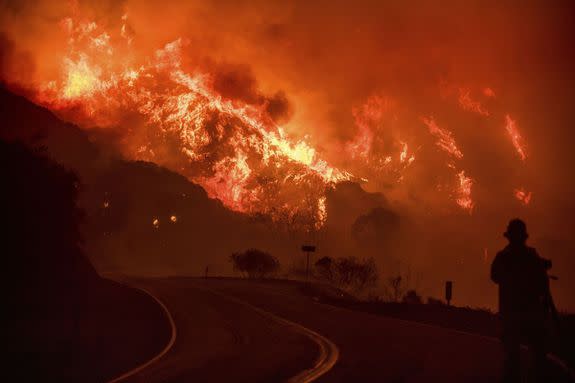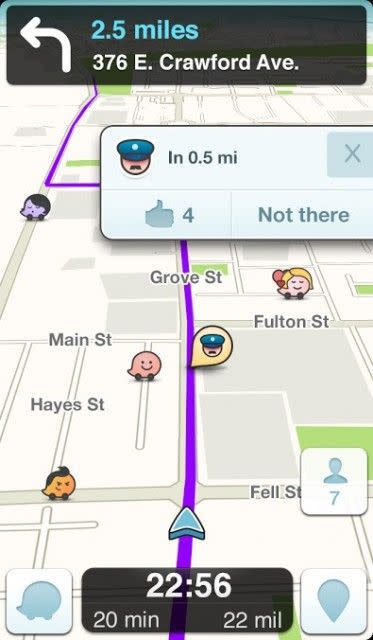6 times navigation app Waze drove itself right into a scandal

When it first debuted in 2007, navigation app Waze had a simple mission: make commuting easier by developing a community of drivers who are able to inform each other about road conditions.
The idea is that, like Google Maps, Waze will give you directions from your current location to your desired destination. What's more, by keeping the app open as you drive, Waze will collect road and driving condition data, and use that info to shape route suggestions that are fast and traffic free.
SEE ALSO: Everything You Need to Know About Waze
It's a great idea in theory except ... well, that model has helped Waze drive directly into trouble from time to time.
Here are six times Waze wreaked havoc on drivers.
Baxter Street bumble
Los Angeles is sprawling and densely populated which means commutes can be long and congested (and sadly, it is NOT recommended that you pull a La La Land and dance on the roof of your car if you are stuck in traffic). So it makes sense that commuters might turn to Waze, which promises to help drivers avoid particularly congested routes, to navigate their way throughout the city.
But, in an effort to help users bypass traffic, Waze has been redirecting LA drivers to Baxter Street, a quiet road in Echo Park, Los Angeles. The only problem is that Baxter Street is famously one of the steepest streets in LA.
"When you get to the top, you can't see the hill on the other side, or the street, so people tend to stop. And that's where a lot of the problems come," Baxter Street resident Jeff Hartman told CBS News.
Once in the neighborhood, drivers aren't prepared for the steepness of the commute, which causes car crashes. Lots of them. "We had our garden wall knocked down twice, and my wife's car got hit in our own driveway. I've seen five or six cars smash into other cars, and it's getting worse," Robbie Evans, another Baxter Street resident, told the LA Times.
Waze defended the directions, telling CBS News "the city has placed a public road there ... it should be considered usable within Waze."
Driving through fire
At the end of 2017, Southern California suffered historically large and devastating wildfires, burning more than 100,000 acres throughout the Los Angeles area. Because of the fires, more than 200,000 people were required to evacuate.

Image: NOAH BERGER/AP/REX/SHUTTERSTOCK
To find travel routes during the exodus, many drivers turned to navigation apps like Google Maps and Waze ... only to be directed to drive toward the very fires they were seeking to escape.
Passing this on for my LA peeps: DON’T USE WAZE near evacuated areas. It is navigating people through the neighborhoods that are on fire #SkirballFire
— Hannah Payne (@hannahgpayne) December 6, 2017
"The Los Angeles Police Department asked drivers to avoid navigation apps, which are steering users onto more open routes — in this case, streets in the neighborhoods that are on fire," the LA Times reported in 2017.
The confusion seemed to stem from how Waze makes recommendations. The app uses info about road blocks and closures in addition to user feedback to give route recommendations. So if the maps aren't updated, you can get directions that lead you to dead ends, or in the case of the wildfires, roads that go through flames.
In response, Waze told Mashable that it was working with the Los Angeles Department of Transportation to close around 110 dangerous road segments and provide drivers with evacuation routes and nearby shelter information.
Waze takes the plunge
There is a great scene in NBC's The Office where Michael Scott, following the directions of his GPS, drives into a lake, overly confident in the devices recommendation. "The machine knows!" he screams as he plunges the car into the water.
That was supposed to be a joke in a sitcom, but in 2018, that gag became a reality, when a group of friends followed Waze directions while sightseeing and ended up driving into Lake Champlain in Vermont, according to the Burlington Free Press.
Tara Guertin said she let her friends borrow her jeep to go sightseeing and, while on the road, the app told them to drive into the boat launch near the Coast Guard station. Because of weather conditions, the drivers didn't realize they were headed into a lake until it was too late.
At the time, Waze said they recommend drivers always watch the road while using the app, but ultimately said they were not able to comment on the incident. "It's impossible to comment here without seeing the user's driving file and we haven't received permission to do so - generally speaking, Waze maps are updated with millions of edits to adapt to real time road conditions daily, often making them the most accurate available," a spokesperson told the Burlington Free Press.
That's not to say that Waze is the only navigation app that gives bad directions sometimes. Google Maps does it too, like the time the Google Maps directed hundred of visitors looking for Blue Mountains National Park outside of Sydney, Australia to a cul-de-sac.
Waze vs. the police
If there is one thing that sets Waze apart from other navigation apps, it's the bevy of features and information on the platform, from the intensity of traffic jams to whether or not your friends are also driving to the same destination as you.
But there is one feature that law enforcement is not so happy about: the police tracker feature.

Image: Waze
In January 2016, the National Sheriffs' Association asked Waze to turn off the police tracker feature in the app, saying the tool endangered the lives of cops.
The request came after Ismaaiyl Brinsley shot New York City police officers Wenjian Liu and Rafael Ramos, who were sitting in their car. The shooting sparked a nationwide conversation about police safety.
"In using technology like Waze to publish or disseminate information, Google must recognize that the police icon is just a tool that, like any other, can be used for good or bad purposes," Edward Mullins wrote in a letter to Google CEO Larry Page, reports the New York Daily News.
However, there was no evidence that the shooter used Waze to execute the attack. While Brinsley allegedly posted a screenshot from the app with a threat to the police a few days before the attack, "the shooter ditched his phone a couple of miles from the murder scene, and there is no official record of an assailant using Waze to ambush police," Mashable's Rex Santus reported in 2015.
Still, Waze issued a statement, telling Mashable that safety is a priority for the app, which is why it partners with local law enforcement.
(No) need for speed
The 2015 shooting is not the only reason why cops resist dislike the Waze police tracker feature. Law enforcement also says that the tool makes it harder for police to stop drivers from speeding. The idea is that, by highlighting where the police are hiding, reckless drivers are able to avoid speed traps and radar guns.
To fight back though, cops in Miami began adding fake officer sighting to the map, in hopes of scaring more drivers to drive safely, reports NBC Miami.
Waze denied the claim that the police tracker led to reckless driving, telling NBC that "most users tend to drive more carefully when they believe law enforcement is nearby."
Tragedy in Brazil
In 2015, Waze was at the center of a Brazilian murder scandal, reports CNN.
A couple was traveling in Brazil, hoping to use the app to find directions to a tourist area in Niteroi. However, the app directed them to a notorious slum area in Brazil that had the same street name as the tourist destination. Once in the dangerous area, one of the drivers, 70-year-old Regina Murmura, was shot and killed after someone fired at the car.
Murmura's husband Francisco, who was in the car at the time of the shooting, was able to escape and reported the incidents to the authorities. Francisco said that Waze was at fault for the incident, saying that "the app was responsible for everything. It was the Waze app who led us there. I have no doubt that they are responsible for it."
But Waze said that while it was saddened by the incident, it can't do anything if that's the address that users select. "Unfortunately it's hard to prevent drivers from navigating to a dangerous neighborhood if it's the destination they select."

 Yahoo News
Yahoo News 